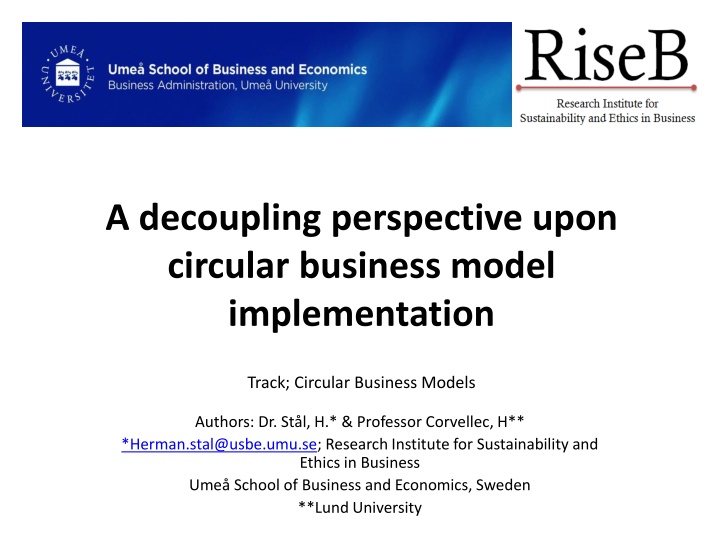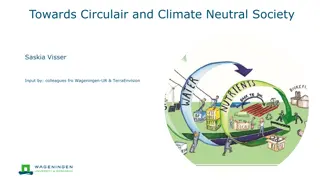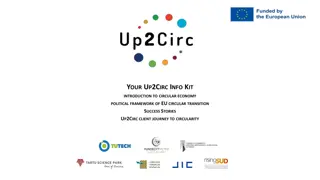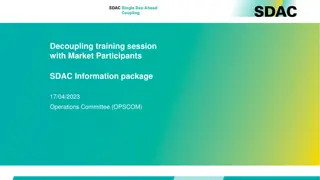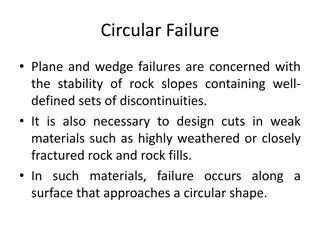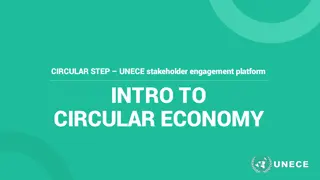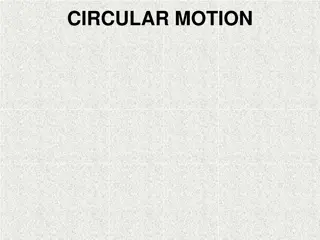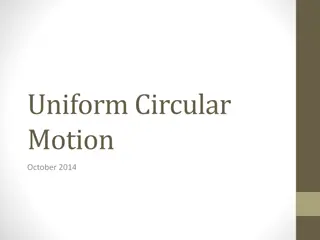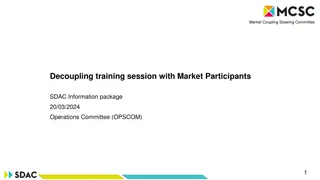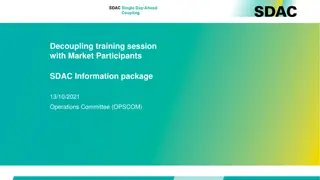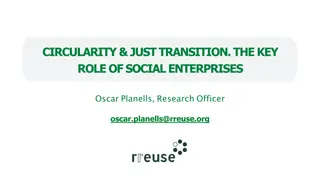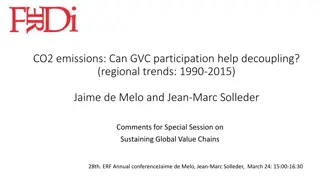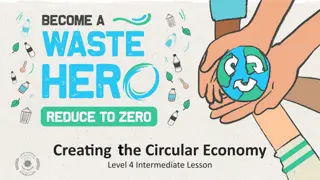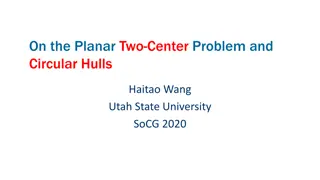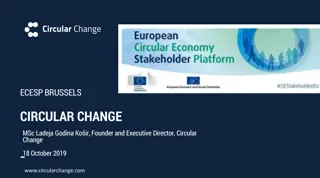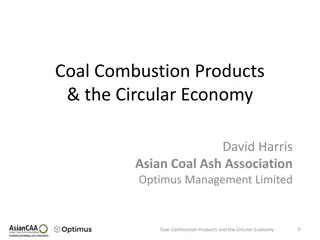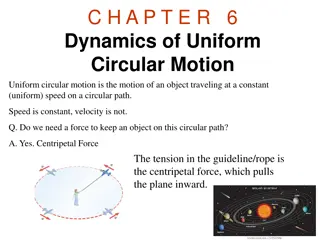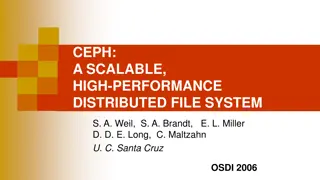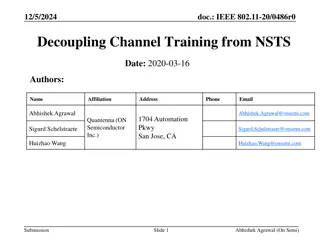A decoupling perspective upon Circular Business model Implementation
Circular business models focus on restorative and regenerative practices such as eco-design, repair, reuse, refurbishment, and recycling. This article explores how organizations adapt to these emerging models for legitimacy while facing complex norms and technical demands. It discusses decoupling theory, patterns of diffusion, and means-ends decoupling in handling organizational tensions. Dive into a brief history of decoupling waves and understand organizational complexity in bridging policy-practice gaps.
Download Presentation

Please find below an Image/Link to download the presentation.
The content on the website is provided AS IS for your information and personal use only. It may not be sold, licensed, or shared on other websites without obtaining consent from the author.If you encounter any issues during the download, it is possible that the publisher has removed the file from their server.
You are allowed to download the files provided on this website for personal or commercial use, subject to the condition that they are used lawfully. All files are the property of their respective owners.
The content on the website is provided AS IS for your information and personal use only. It may not be sold, licensed, or shared on other websites without obtaining consent from the author.
E N D
Presentation Transcript
A decoupling perspective upon circular business model implementation Track; Circular Business Models Authors: Dr. St l, H.* & Professor Corvellec, H** *Herman.stal@usbe.umu.se; Research Institute for Sustainability and Ethics in Business Ume School of Business and Economics, Sweden **Lund University
Circular business models in an institutional perspectice An economy that is restorative and regenerative by design Eco-design, repair, reuse, refurbishment, remanufacture, sharing, waste prevention & recycling Circular business models (CBMs), activity systems (Zott & Amit, 2010) describing ways of organizing. CE is an emerging institution consisting of: Rules, norms and beliefs (cf. Scott, 2001) How do organizations respond to this emerging institution? Herman.stal@umu.se 2
Enter decoupling Organizations adapt to institutions not because they provide functional value but because of legitimacy Basically because important stakeholders expect it from modern, rational organizations (Brunsson & Sahlin-Andersson, 2000). But organizations face complex and inconsistent norms (Greenwood et al., 2011) Technical demands conflict with emerging trends Thus, decoupling, various gaps between talk and action or policy and practice can be expected Herman.stal@umu.se 3
Contributions CBM-literature Spread/implementation of activities part of such models Explain patterns of CBM diffusion/implementation Decoupling theory Describe how firms can handle the tension arising from means-ends decoupling (Bromley & Powell, 2012) By horisontal decoupling/outsourcing 4
A brief history of decoupling First wave Structure/action decoupling (Meyer and Rowan, 1977) The organization of hypocrisy (Brunsson, 1989) Second wave Mixed picture (Fizz & Zajac, 2004; Westphal & Zajac, 2001) Recoupling (Hallett, 2010) Coupling (Sauder & Espeland, 2009; Haack et al., 2012) Third wave From policy-practice decoupling to means-ends decoupling (Bromley and Powell, 2012; Wijen 2014) Functional issue? (Haack & Schoeneborn, 2015, Wijen, 2015) Herman.stal@umu.se 5
Take aways Organizational complexity (Bromley and Powell 2012): Policy-practice gaps may be transient Gaps may also be horizontal But legitimacy is a factor! Herman.stal@umu.se 6
CBMs in the context of fashion The dominance of fast fashion (Fletcher, 2013; Christopher et al, 2004) Environmental costs of new clothes (Allwood et al., 2006): Water Non-renewable energy Chemicals Labor conditions And for what? Clothes are worn a few times before disposed 7
Case companies Large retailers/fast(er) fashion (H&M, KappAhl, Lindex, Gina Tricot, Indiska) Premium brands/slow fashion (Filippa K, Boomerang, Nudie) 8
Findings CE-talk in sustainability reports and media communication Implementation of take-back systems (H&M, KappAhl, Indiska, FilippaK, Boomerang, Nudie, Lindex, Gina Tricot, Jack & Jones) Through charity partner (Indiska, Gina Tricot, Lindex) Through I:CO (H&M, KappAhl, Jack & Jones) Through own channel (FilippaK, Nudie, Boomerang) Repair, prolonging product-life (e.g., Nudie) Access without ownership (Filippa K) Marginal use of recycled materials Herman.stal@umu.se 9
Analysis Open closed loop-system clothes are channeled to the international second-hand market Take-back systems are, with some exceptions, not integrated in firm business models (except in marketing) Thus in terms of decoupling: there is both practice and policy Gap between CE as a full program and practice Horisontal gap Herman.stal@umu.se 10
Concluding discussion Limited version of CE-implementation enables firms to: Talk CE Receive legitimacy from broad stakeholder groups including media, consumers and policy makers Potentially establishes what CE means in fashion It is about take-back systems Establish/shape the industry-version of the institution Experimenting while waiting for rising cotton prices(?) 11
